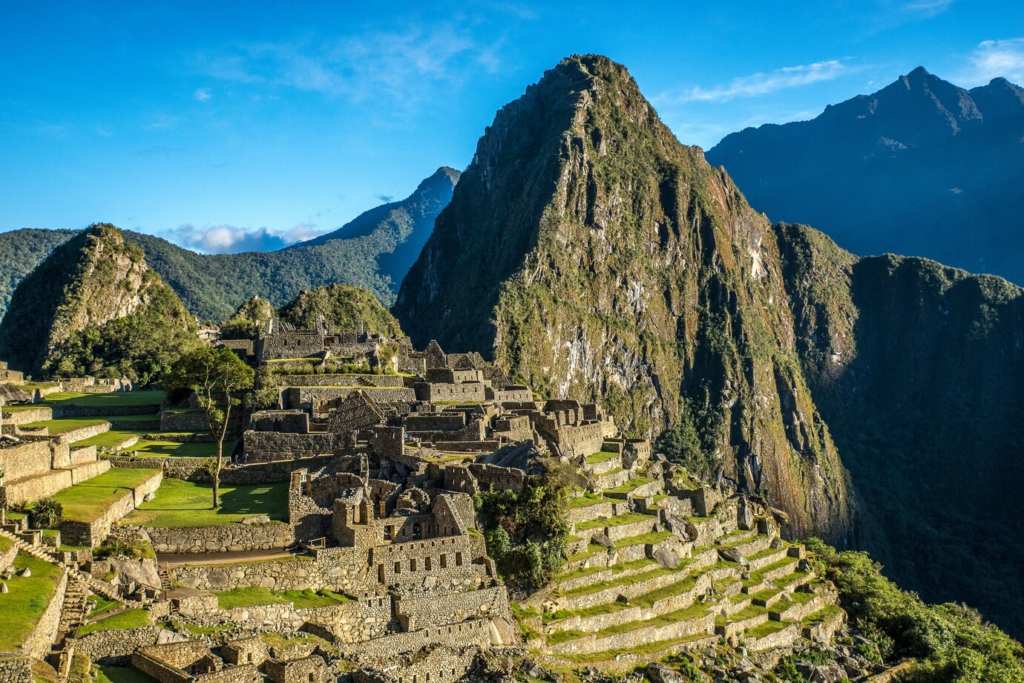Table of Contents
Machu Picchu is an ancient Incan city located high in the Andes Mountains of Peru, approximately 2,430 meters (7,970 feet) above sea level. Built in the 15th century by the Inca Emperor Pachacuti, it is one of the best-preserved examples of Incan civilization. The city features stone temples, palaces, terraces, and water channels, all constructed without mortar, demonstrating the Incas’ advanced engineering skills. Major structures include the Intihuatana Stone, the Temple of the Sun, and the Temple of the Three Windows Machu Picchu was abandoned in the 16th century and remained hidden until its rediscovery in 1911 by explorer Hiram Bingham. Today, it is recognized as a UNESCO World Heritage Site and one of the New Seven Wonders of the World, attracting millions of visitors every year.

The Pyramids of Giza are among the most fascinating and mysterious structures ever built. Located on the Giza Plateau near Cairo, Egypt, these magnificent pyramids have stood for over 4,500 years as a testament to the engineering brilliance and cultural richness of ancient Egypt. The three main pyramids—Khufu (Great Pyramid), Khafre, and Menkaure—were constructed as grand tombs for pharaohs, symbolizing their journey to the afterlife. Despite extensive research, many aspects of their construction and purpose remain shrouded in mystery, captivating historians, archaeologists, and travelers worldwide.
Historical Background Of Machu Picchu
The Pyramids of Giza were built during the Fourth Dynasty of the Old Kingdom of Egypt (around 2600–2500 BCE). Pharaoh Khufu (also known as Cheops) commissioned the largest pyramid, known as the Great Pyramid, which originally stood at 146.6 meters (481 feet) and was the tallest man-made structure in the world for over 3,800 years. His successors, Pharaoh Khafre and Pharaoh Menkaure, built the other two pyramids nearby. Alongside these pyramids, there are temples, smaller pyramids for queens, and the famous Great Sphinx, which is believed to guard the sacred site.
Engineering and Construction
One of the biggest mysteries surrounding the Pyramids of Giza is how they were built. The ancient Egyptians did not have modern technology, yet they managed to move and place massive limestone and granite blocks, some weighing up to 80 tons, with incredible precision. Theories suggest that they used ramps, sleds, and a highly organized workforce of skilled laborers, not slaves as once believed.
The internal structure of the Great Pyramid includes passageways, burial chambers, and air shafts, which are believed to have spiritual and astronomical significance. Some scholars believe the pyramids were aligned with celestial bodies, reinforcing the idea that they had religious and cosmic importance.
Mysteries and Theories
Despite extensive studies, many questions about the pyramids remain unanswered:
- How were the massive stones transported and lifted into place?
- What was the exact purpose of the air shafts inside the pyramids?
- Do hidden chambers still remain undiscovered within the structures?
- Did the pyramids have a greater purpose beyond being tombs?
Some theories suggest that the pyramids were part of a larger energy system or even had connections to extraterrestrial life. While these ideas remain speculative, they add to the intrigue surrounding these ancient wonders.
Cultural and Historical Significance
The Pyramids of Giza are not just architectural marvels; they are symbols of the power, knowledge, and spiritual beliefs of ancient Egypt. They reflect the Egyptians’ advanced understanding of mathematics, astronomy, and engineering. Today, they are recognized as a UNESCO World Heritage Site and continue to attract millions of visitors each year, inspiring awe and admiration.
Conclusion
The Pyramids of Giza remain one of the greatest achievements of human civilization. While much has been discovered about their construction and purpose, many mysteries still surround these iconic structures. Their grandeur and enduring legacy make them one of the most visited and studied monuments in the world, ensuring that the secrets of ancient Egypt continue to captivate future generations.

